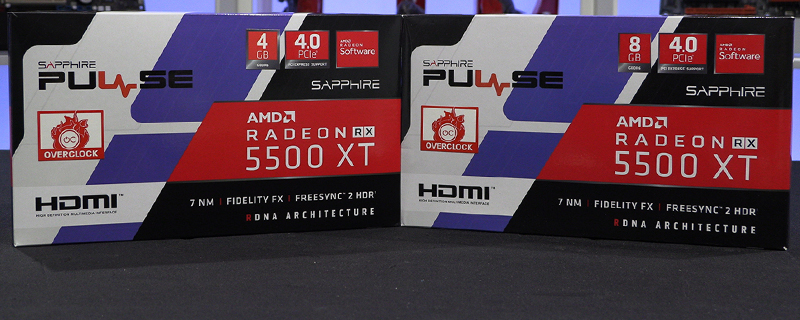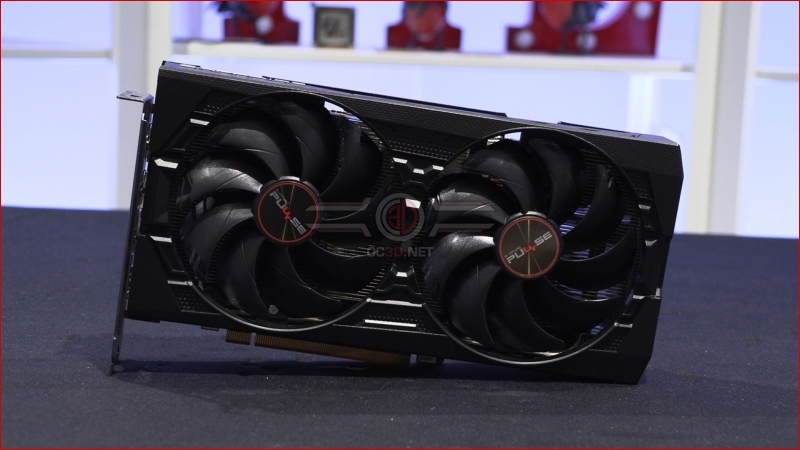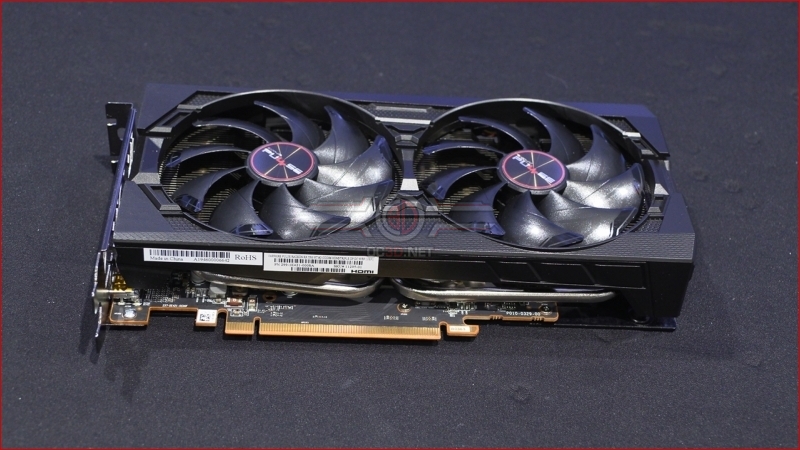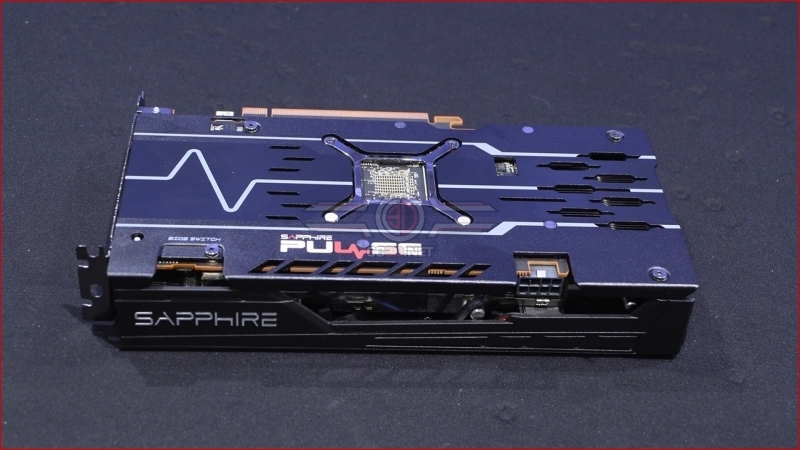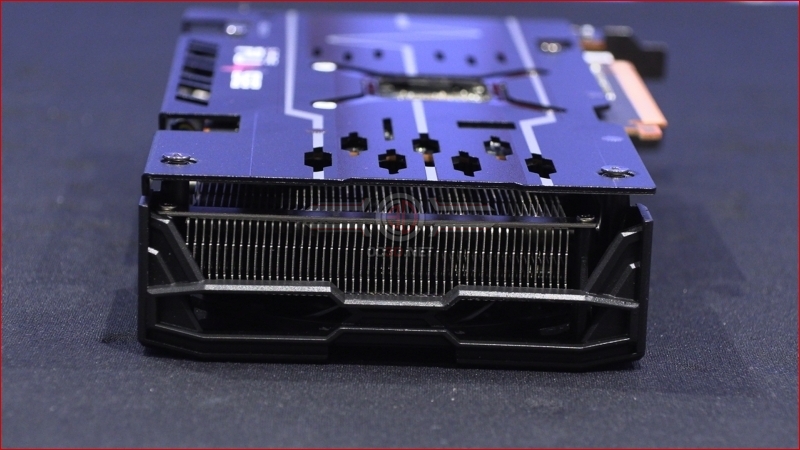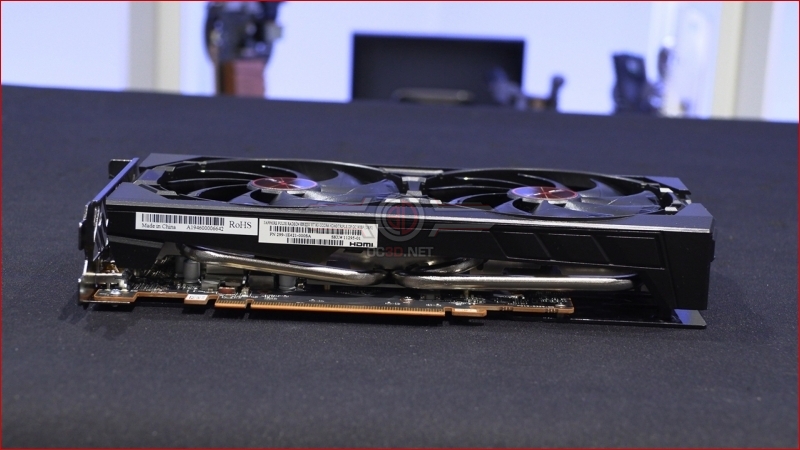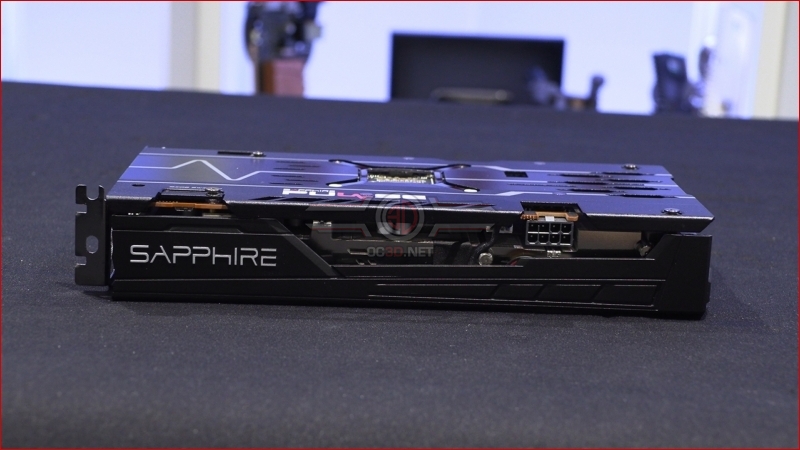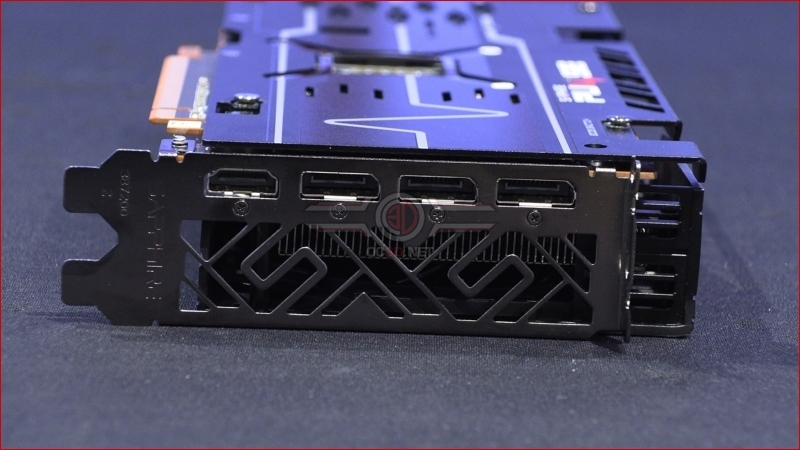Sapphire RX 5500 XT Pulse 4GB vs 8GB Review
Up Close
Whilst we have both cards in to review today they are, GDDR6 levels aside, absolutely identical. The 4GB model is first and the 8GB model below it, and they are inseparable in both form and function. The rest of our photos will concentrate upon the 8GB variant, but you’d never notice unless you blew up the barcode identifier.
Despite it’s affordable price tag the Sapphire Pulse RX 5500 XT comes with a twin fan cooler sporting 9 blades on each fan for that lovely combination of airflow and low noise that makes gaming such a pleasure. There are few things more irritating than your graphics card shouting at the world the moment you ask it to render anything more complicated than Freecell. With the Sapphire Pulse that won’t be an issue.
Around the back we find a vented backplate to both spread the heat effectively across the whole breadth of the PCB, whilst the keen eyed amongst you will have spotted a BIOS switch to move between quiet and performance modes. With it in the left position we saw an 8 MHz increase in boost clock whilst on the right saw a tiny increase in average clock speeds. It’s very much a judgement call as there is little to pick between the two modes, although for our testing we’re naturally running in performance mode.
Normally more budget conscious cards save their money with a weedy cooler, but the Sapphire Pulse has a thick heat sink to go along with it’s twin fans and backplate. Elements that will enhance how easy the card is to live with, as well as its longevity. When you can’t afford to change your GPU every six months having one that will keep you gaming happily for many years is a seriously positive factor.
The heatsink is aided by two beefy heatpipes leading out from the GPU itself to dissipate any heat generated as quickly as possible. The 7nm process Navi GPUs have been much cooler than their predecessors so hopefully this will continue to be the case with this latest model.
As a less powerful GPU than the big RX 5700 XT models the 5500 XT only requires a single 8 pin PCIe power input to keep it fed with all the juice required to fill your eyeballs with glorious polygonal beauty.
Lastly the outputs are AMDs usual selection of 1 HDMI and three DisplayPorts. We like the large vent holes in the back plate too, which should help shovel the warm air out of the back of your case rather than let it stay in and spill up over your CPU cooler.



